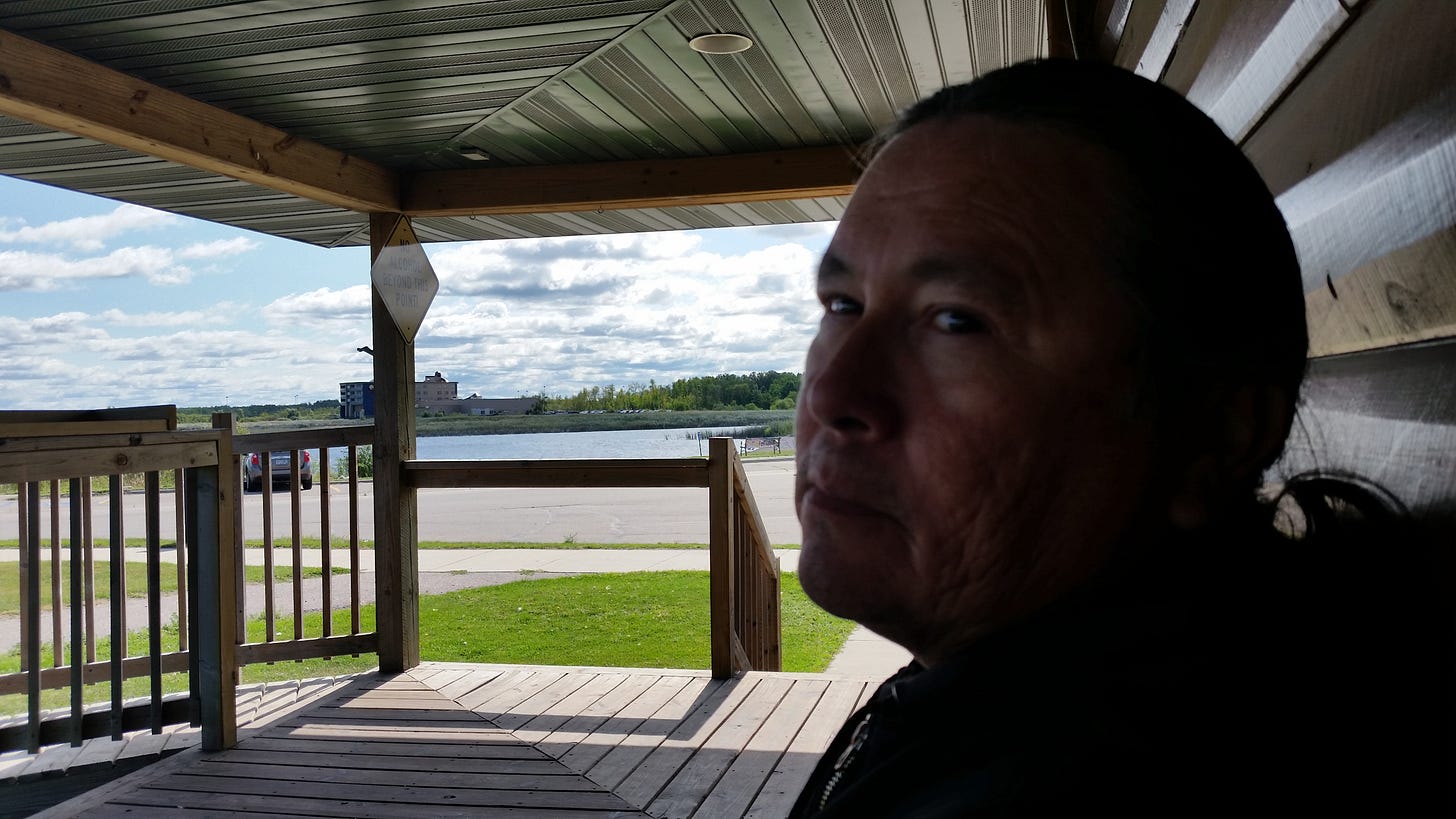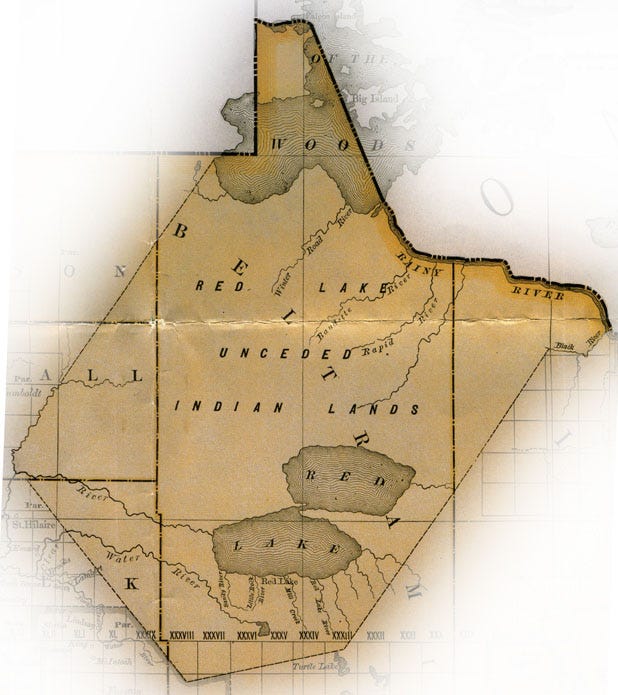Don Kakaygeesick sits on the porch at the Trading Post in Warroad in this photograph from a few summers ago and you can see Lake of the Woods in the background. The land across the water is where Kakaygeesick lived. Don still has the original Allotment #3 papers made out to his great-grandfather.
The document, dated August 30, 1905, signed with the authority of President Theodore Roosevelt, allotted 102.2 acres of land to Kakaygeesick “an Indian of the Red Lake Indian Reservation.”
Congress passed the General Allotment Act, known as the Dawes Act, in 1887 which authorized the United States government to break up reservation land held in common by the members of a tribe into parcels assigned to individual Indians. Non-allotted lands were declared surplus and sold. Since then more than 1.5 billion acres of reservation land transferred into the hands of white owners.
Here’s a map that shows the unceded territory of Red Lake Reservation. Notice the Northwest Angle and Muskeg Bay of Lake of the Woods at the top of Minnesota.
In 1899 Red Lake Reservation ceded eleven towns and the land north of Upper Red Lake. In 1902, Congress moved to further diminish reservation lands.
My mother’s grandfather, Charlie Kling, and his young family had arrived on Lake of the Woods in 1903. Sent from Sweden by a timber company to Minnesota, they first arrived in Marine on St. Croix, about 40 miles north of Minneapolis where the company manufactured wooden shipping crates. My great-grandfather moved his family north to stake a homestead claim near Willow Creek, twelve miles east of Warroad. The Homestead Act necessitated the General Allotment Act.
But Red Lake Reservation had been exempt from the 1887 Dawes Act. They had also been exempt from the Nelson Act of 1889 which had forced the relocation of all other Chippewa tribes to the White Earth Reservation in order to sell off reservation lands in northern Minnesota to timber companies.
Red Lake Reservation is not like other reservations in that when it was created the people were not removed from their homeland to be relocated by the federal government. Lines were drawn around the homelands they refused to leave.
Red Lake Reservation is not like other reservations in that it is a “closed” reservation in that all land is held in common by the tribe and there is no private property held by individual members.
There were never supposed to be any allotments.
Except there were. Three.







I also loved how you shared the NPR recorded segment on FB recently of the Red Lake Reservation. And when they talked of "He Who Is Spoken To" (forgive me but my most basic English spelling is terrible) I was reminded of Kakaygeesick. The adversity and heartache they endured while courageously and deftly moving forward in negotiating, honoring and protecting the land that is so much more than land. That land has such an important history to tell and its incredible you are giving it that voice. Thank you again for sharing.
I am drawn in by the injustice.